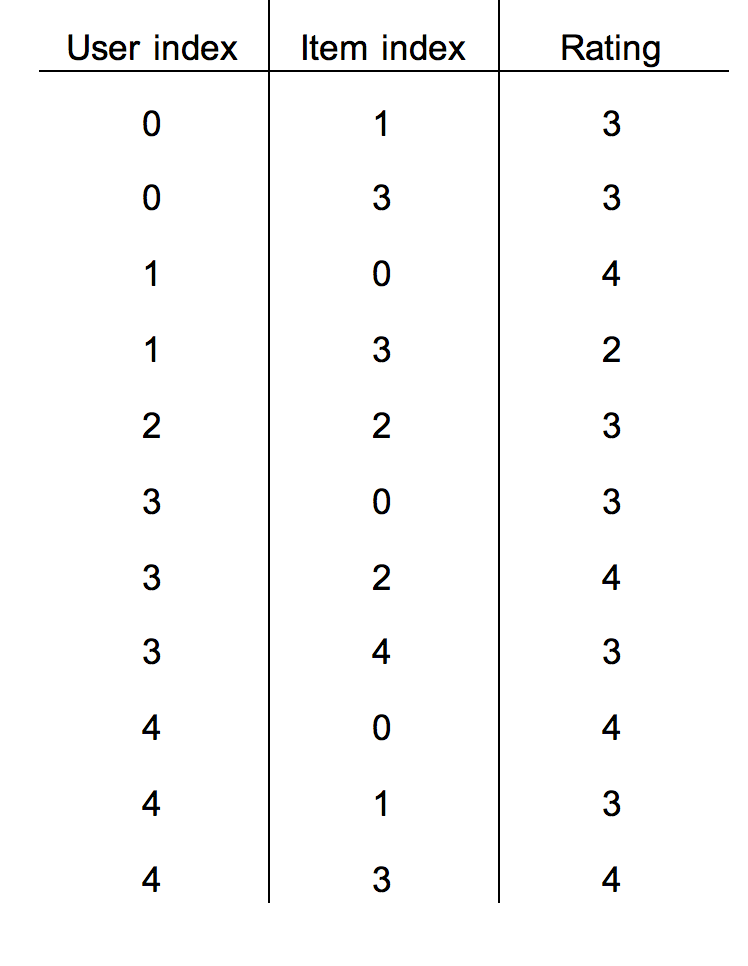Content Filtering

with TensorFlow

vs

vs
Use past user behavior to predict future preferences. "Collaborative" because users collaborate to fill in the gaps.
vs
Recommend based on similarity of users.
E.g. if Bob has rated items x, y and z highly, find other users who have rated those items highly and see what else they like, then recommend to Bob those with the most agreement among the other users.
vs
Learn hidden features in items and users that interact in such a way as to produce the ratings we've seen.










Shrink the learned factor values by adding the sum of their squares times some lambda parameter to the base cost.

The mean rating can be added on to the multiplication result at the end (before calculating cost) - or the data can be centered by subtracting the mean before training (and evaluating against the centered ratings.)

with user bias held fixed




| Space | Forward |
|---|---|
| Right, Down, Page Down | Next slide |
| Left, Up, Page Up | Previous slide |
| P | Open presenter console |
| H | Toggle this help |